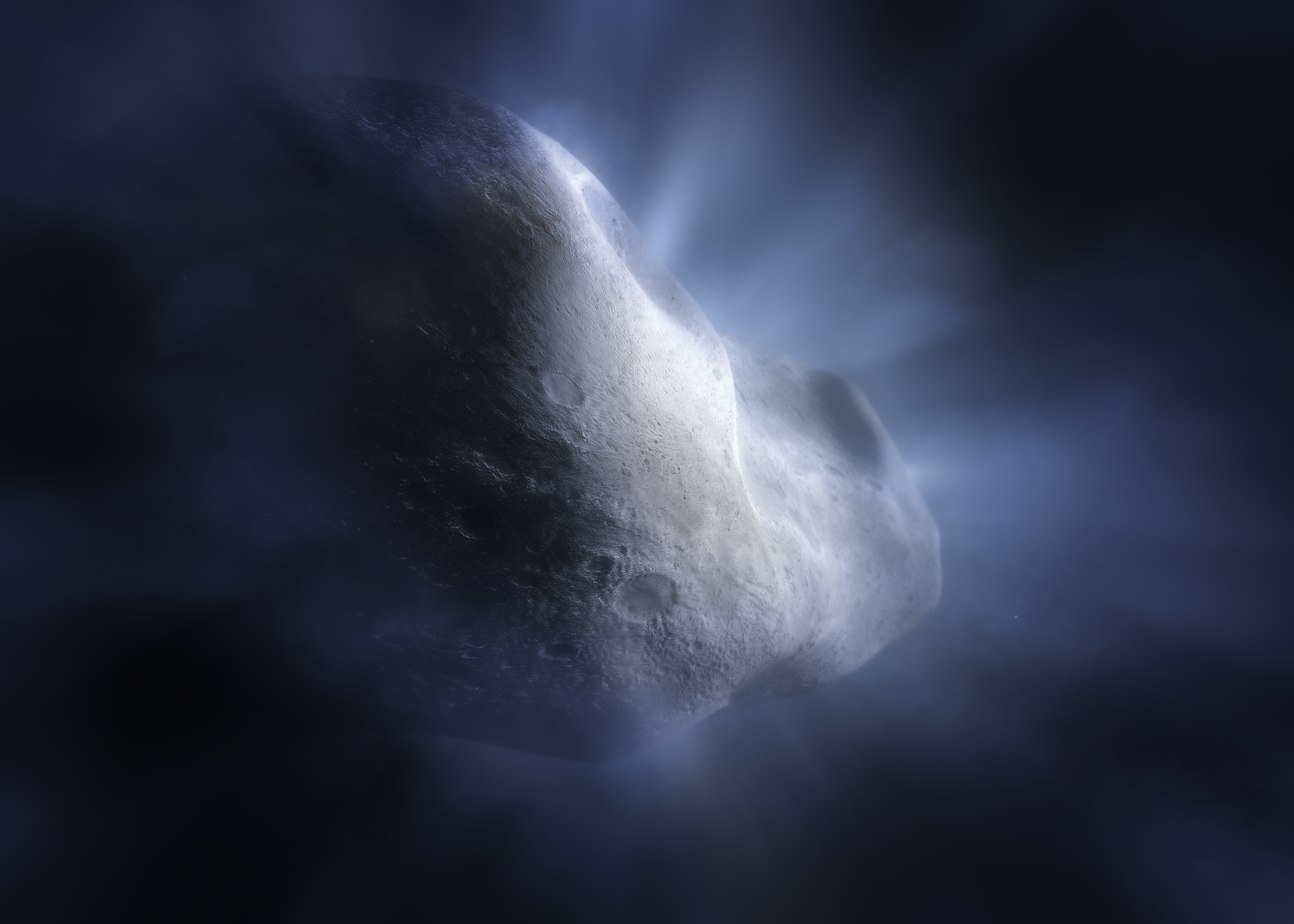1 min read
Artist’s Concept of Comet 238P/Read

This illustration of Comet 238P/Read shows the main belt comet sublimating—its water ice vaporizing as its orbit approaches the Sun. This is significant, as the sublimation is what distinguishes comets from asteroids, creating their distinctive tail and hazy halo, or coma. It is especially important for Comet Read, as it is one of 16 identified main belt comets found in the asteroid belt, as opposed to the colder Kuiper Belt or Oort Cloud, more distant from the Sun. Comet Read was one of three comets used to define the class of main belt comets in 2006.
The James Webb Space Telescope’s detection of water vapor at Comet Read is a major benchmark in the study of main belt comets, and in the broader investigation of the origin of Earth’s abundant water. However, the fact that carbon dioxide was not detected in the sublimating material was a surprise that scientists will need to follow-up on to get a better understanding of the role main belt comets play in the history, and current state, of our solar system.
- Release DateMay 15, 2023
- Science ReleaseNASA’s Webb Finds Water, and a New Mystery, in Rare Main Belt Comet
- CreditIllustration: NASA, ESA
Related Images & Videos

Comet 238P/Read (NIRCam Image)
This image of Comet 238P/Read was captured by the NIRCam (Near-Infrared Camera) instrument on NASA’s James Webb Space Telescope on September 8, 2022. It displays the hazy halo, called the coma, and tail that are characteristic of comets, as opposed to asteroids. The dusty coma...

Comet Spectra Comparison
This graphic presentation of spectral data highlights a key similarity and difference between observations of Comet 238P/Read by the NIRSpec (Near-Infrared Spectrograph) instrument on NASA’s James Webb Space Telescope in 2022 and observations of Comet 103P/Hartley 2 by NASA’s...

Comet 238P/Read (NIRCam Compass Image)
Image of Comet 238P/Read captured by the Webb Telescope’s NIRCam (Near-Infrared Camera), with compass arrows, scale bar, and color key for reference. The north and east compass arrows show the orientation of the image on the sky. Note that the relationship between north and east...
Share
Details
Laura Betz
NASA’s Goddard Space Flight Center
Greenbelt, Maryland
laura.e.betz@nasa.gov
NASA, ESA






























